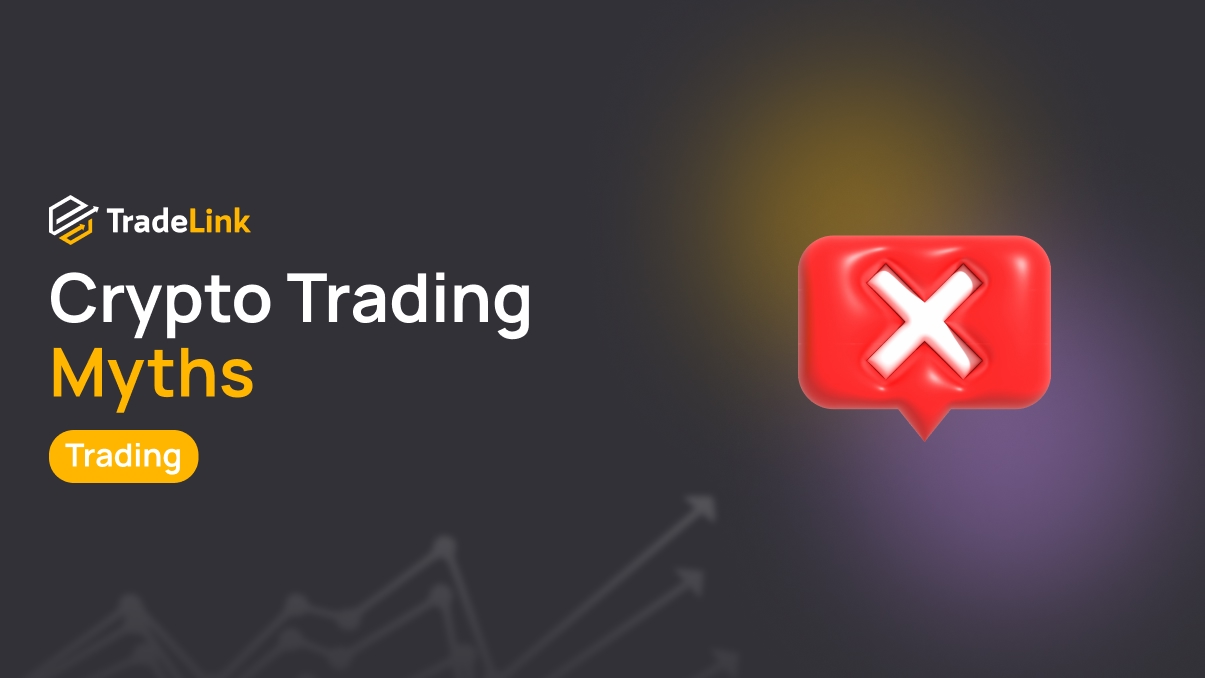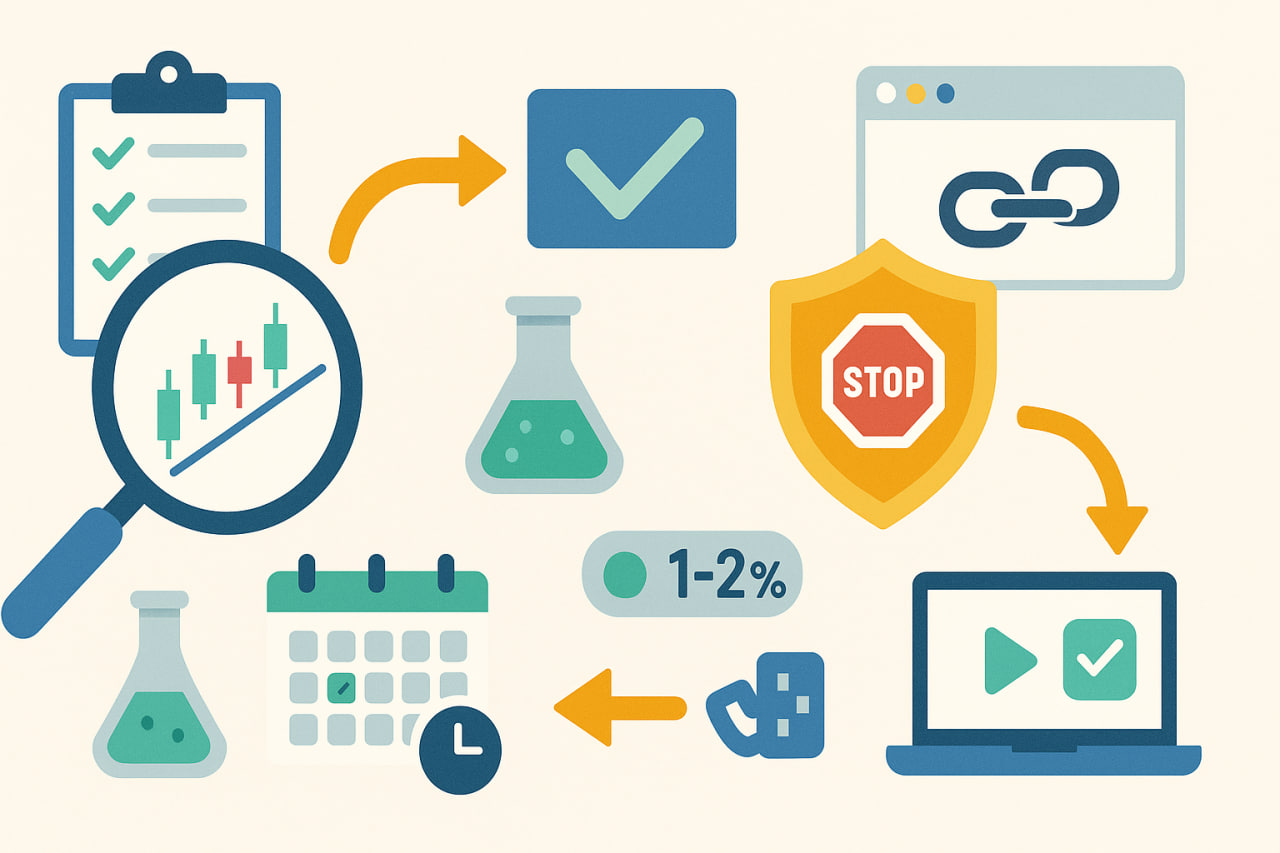Crypto Trading Myths: Common Misconceptions to Avoid

Contents
- Introduction
- What are crypto-trading myths
- Popular myths about cryptocurrency trading
- Trader Mistakes Related to Myths
- How to Avoid Misconceptions in Crypto Trading
- Using Tools to Verify Facts
- Conclusion
Introduction
Cryptocurrencies remain one of the most discussed topics of recent years. Interest in trading is growing, and along with this, myths and false expectations multiply. Many people come to the market hoping for quick profits; however, in most cases, success requires knowledge, preparation, and time. To reduce the risk of mistakes, it is essential to distinguish between facts and assumptions and understand where common pitfalls arise.
What are crypto-trading myths

Crypto-trading myths are persistent yet mistaken ideas about how the digital-asset market works. They create unrealistic expectations and push people toward decisions that often lead to losses.
Why myths appear
Misconceptions often arise due to a lack of basic knowledge, selective coverage of successes in the media and blogs, the influence of social networks, and promises of “getting rich quickly.” As a result, a distorted picture forms: real risks are underestimated, and the complexity of the process seems lower than it is in practice. These factors fuel myths about crypto trading and hinder a sober assessment of the situation.
Popular myths about cryptocurrency trading
As the market grows, common misconceptions also multiply: “it is easy to make a profit,” “signals are always accurate,” “charts predict the future.” Such assumptions increase the likelihood of impulsive trades. Below, we will consider the central myths about trading.
Myth of easy and quick earnings
The idea “bought today — sold tomorrow — made a profit” seems simple, but price fluctuations, spread widening, and technical limitations of order execution often lead to the opposite result. Quick earnings are rare; in most cases, a stable outcome is associated with a system of rules and discipline.
The myth that trading suits everyone
At times, desire and a smartphone are enough. In practice, trading requires time, concentration, and a willingness to work through drawdowns. It suits those who can follow procedures and make balanced decisions. If there is no such confidence, it is reasonable to start with a demo account or long-term investments, where the pace and response requirements are lower.
Myth of 100% reliable signals and strategies
Advertising promises of the “perfect strategy” usually rely on selective examples. Even workable approaches produce a series of losing trades. Verified statistics, transparent rules, and testing hypotheses on historical data are essential. Request complete trade reports, check ideas on your own data, and assess the depth of drawdowns, not only the maximum results.
The myth that technical analysis always works
Indicators and chart patterns describe past price behaviour and help formulate scenarios. Still, they do not guarantee that the news background, liquidity, and the activity of large participants influence an accurate forecast. The quality of decisions is improved by combining levels, volume, time of day, and an events calendar. Technical analysis is helpful as an “if-then” system, not as a source of infallible signals.
The myth that the market is always predictable
The assertion “an experienced trader sees everything in advance” is misleading. The cryptocurrency market often changes pace: at night, liquidity decreases, and during the day, activity increases. News and sudden price impulses usually disrupt expectations. In most cases, the task of a market participant is not to guess every candlestick but to maintain a manageable level of risk and preserve capital during periods of elevated volatility.
Trader Mistakes Related to Myths

Common misconceptions can lead people to make decisions with an elevated level of risk. Belief in the constant recovery of price, trust in unverified signals, and overestimation of market predictability often lead to impulsive entries and uncoordinated actions.
Mistakes of Novices
Novice traders most often
-
Unthinkingly follow signals from chats and do not analyse the logic of entry.
-
Trade without a trading journal and lose the context of decision-making
-
Frequently change instruments and timeframes without an apparent reason
-
Use a huge position size
-
Average losing positions in the hope of a reversal
-
Do not account for fees and slippage
To reduce the number of typical mistakes, it is recommended to work according to a checklist, record hypotheses before opening a position, and evaluate results in a trading journal. This approach helps identify recurring behaviour patterns and adjust the process accordingly.
Table of Common Novice Mistakes and Their Consequences
Mistake | Consequence | How to Avoid |
Unthinkingly following signals | Losses without understanding the reasons | Check the logic of entry and test the idea on historical data |
Trading without a journal | Repetition of the same decisions | Keep a trading journal and regularly analyse results |
Entering the entire deposit | High vulnerability to volatility | Divide the capital and limit the share allocated to a single idea |
Averaging a losing position | Increased risk and loss of control | Accept a limited loss and look for a new entry point |
Neglecting fees | Reduction of final profitability | Account for fees and slippage when planning a trade |
How to Avoid Misconceptions in Crypto Trading

-
Check information in official project sources and in blockchain explorers
-
Master basic topics gradually and reinforce knowledge with examples
-
Test strategies on historical data and use a demo account
-
Control risk and limit losses within a pre-established threshold
-
Work with a checklist that includes entry parameters, targets, and exit criteria
This procedure, in most cases, helps distinguish between assumptions and facts, thereby reducing the likelihood of mistakes.
Using Tools to Verify Facts
Systematic knowledge improves decision quality, and discipline helps act consistently. A clear plan protects against impulsive entries, and a unified approach to risk management makes results more predictable over the long run. Regular trade reviews and documenting hypotheses support a sustainable process of improvement.
The Role of Knowledge and Discipline
-
Blockchain explorers help assess the movement of funds and the activity of addresses.
-
The order book and the trade tape reflect current liquidity and actual volume.
-
Comparing prices across several venues makes it possible to account for spreads and slippage.
-
The trader’s journal — recording hypotheses, entry parameters, and outcomes for subsequent analysis; it is convenient to combine it with a platform where real-time portfolio statistics are available, to compare manual records with objective metrics and see deviations immediately
-
An events calendar helps prepare for news and account for its impact on volatility.
Conclusion
Myths constrain development and increase the likelihood of mistakes. A more balanced approach involves verifying sources, implementing unified risk management rules, and executing tasks with discipline. In most cases, a combination of these elements helps avoid illusions and increases the resilience of results over an extended period.